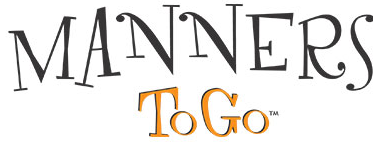
Why You Should Teach Etiquette for Teens In High School
Teaching etiquette is important at any age. But etiquette for teens is incredibly significant — especially for high school students! With so many big life changes ahead, teenagers need to be prepared to thrive socially out in the world.
Focusing on etiquette for teens in your high school classroom will help you continue to positively impact your students. You’ll provide them with skills and knowledge that last a lifetime.
Why It’s Essential To Focus On Etiquette For Teens
As an educator, you understand the value of social skills for every student. Particularly for high school students, knowing how to act in both social and professional situations is essential!
Basic manners and etiquette for teens helps them make positive impressions on the right people. Whether your high schoolers are applying for part-time jobs or apprenticeships, college, or interviewing, etiquette is the key!
Plus, etiquette helps teens know how to respect others. In such a vulnerable emotional time as adolescence, the more respect and empathy we can foster, the better!
Teenagers who use good manners (and have amazing social skills) are more likely to receive opportunities to grow and thrive. In a modern world grounded in tons of new social etiquette rules, teens might not receive proper manners education at home. That means the classroom might be the only place they could learn social skills and etiquette for the professional world!
Etiquette for teens impacts their ability to excel, both in school and professionally as they enter the workplace.
Related: Why Etiquette for Kids Is So Important to Teach In Elementary School
Basic Teen Etiquette To Get Started
Every teen should have a certain set of skills that will help them socially, academically, and professionally. No matter what subject you teach, etiquette for teens is incredibly important….and easier than you think to add to your classroom.
Some basic etiquette for teens to focus on include:
- How to make (and appropriately maintain) eye contact
- How to introduce themselves
- Conversation skills
- Using appropriate language when speaking with others
- When to put their devices away and be completely present
- Digital decorum
- How to navigate a place setting
- How to manage and present themselves well on social media
- Expressing gratitude
- Basic interview skills
- Good posture when sitting or standing
- Good hygiene
- Dressing for professional occasions
Receiving these basic skills will help any teenager navigate the world more smoothly. All of these skills are easy to teach, but incredibly valuable (and lifelong).
How To Start Adding Etiquette for Teens To Your Curriculum
Etiquette for teens doesn’t have to be the entire focus of your classroom. It’s easy to add small, teachable moments to your lessons, no matter what subject you teach.
First, make sure you model good behavior in your classroom. Consistently model the etiquette and social behaviors you’d like to see your students learn.
You can even point out moments where you practiced specific etiquette skills.
Next, point out and celebrate when a teenager in your class is using those amazing etiquette skills. Whether it’s skills from a lesson you’ve taught or something you haven’t covered yet, celebrating etiquette helps teens see its value.
Be direct when teaching etiquette for teens. Don’t assume that all teenagers know even basic social skills or manners!
Everyone’s home situation, background, and lifestyle are different, so create an even playing field by showing and telling what’s right (and explaining why it’s right).
You’ll also want to highlight the true benefits of good manners and etiquette for teens in your classroom. Let’s be honest: no high schooler likes feeling as though what they’re doing is irrelevant! The more you can show them how valuable these skills are, the more open they’ll be to learning.
Teaching etiquette is about self-respect and respecting others.
You should highlight to your students that etiquette and good manners aren’t just a set of strict rules. Instead, encourage students to reflect and use these skills because of how it makes them feel on the inside!
Benefits of Etiquette For Teens
Students who learn and use etiquette become more polite, well-rounded teenagers and adults.
Etiquette for teens actually leads to a number of positive character traits, like:
- Greater confidence and self-esteem
- Empathy for others
- Improved etiquette and social skills in the classroom and at home
- Better manners in everyday life
- Confidence to take on leadership roles and new challenges
All of these character traits help teenagers navigate adolescence and beyond. As they grow older, those fundamental etiquette lessons will continue to add value to their lives.
High school is one of the most important times to focus on manners and social skills. Etiquette for teens provides lifelong value and builds character. Even better, it helps prepare them for amazing opportunities as they grow older!
If you’re ready to start focusing on etiquette for teens in your classroom, Manners To Go’s curriculums can help you! Providing etiquette and social education to your students in any subject is easy with the right strategies and tools on your side.
Here is a FREE Guide to Help YOU Start a Business Teaching Manners to Children
CLICK THE IMAGE TO GET THE DOWNLOAD RIGHT NOW
Here Are Your Next Steps

Get to Know Manners To Go™
Most likely, you will want to get to know us. Feel free to call or email us. Click on the links below. We are happy to discuss the details with you.

Decide on the best training option for you
We offer two trainings to become certified to teach manners to children:

Option #1:
“Live” Video Training
If you are looking to start immediately and save money on travel and time, then this is your best option.You choose the dates of our trainings. Most choose to have their sessions once a week, others twice. This is a “live” and private training. It is NOT self-guided.

Option #2:
Two-Day In-Person
PRIVATE Training. That’s right, we meet in person, the two of us and our focus is completely on your business. Click the image above or follow the button below to learn more and to see a list of cities available for your training.

Receive the curriculum and book your training dates
Upon payment, you receive the curriculum. Next, we will send an email asking you to schedule your first training date.

Join the
Manners To Go™ movement with Lisa Richey.











 Lisa Richey provides etiquette programs to businesses, schools, and individuals.
Lisa Richey provides etiquette programs to businesses, schools, and individuals.



